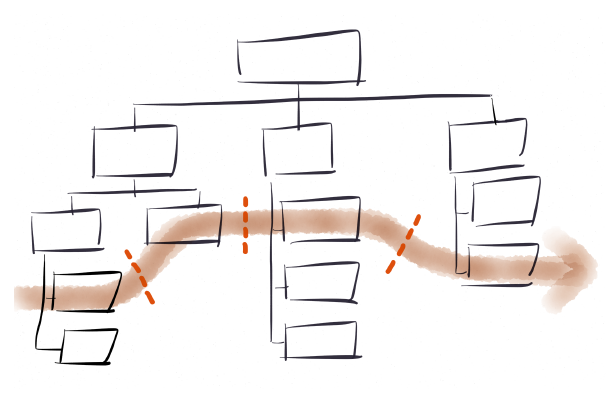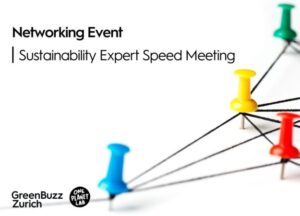A company’s culture is the product of its management system. Employees generally behave as the system dictates. Most companies use a traditional reward and punishment system to motivate their employees to achieve more: work well and you get a bonus; make mistakes and you get criticised. At the same time, managers want to increase collaboration and creativity in their teams.
It’s astonishing how few managers at any level understand how their chosen management system decisively influences the behaviour of their employees. This also includes functional organisation charts, which break up business processes with countless interfaces that make collaboration even harder (see graphic).
How does your company see people: X or Y?
In the 60s, Douglas McGregor investigated employee behaviour at work. In his book The Human Side of Enterprise, McGregor reported on so-called ‘Theory X’ employees, who don’t like going to work, don’t enjoy it and are difficult to motivate through salary alone. Convincing them requires financial incentives and, if necessary, punishments. McGregor also describes the self-fulfilling nature of this theory: the strict regulations further demotivate employees. This style of management is based on a pessimistic view of humanity. Employees in McGregor’s ‘Theory Y’ like their work – under specific conditions – because they find it fulfilling and because it gives them purpose (you can find more examples of Theory Y here).
What can management do in practice?
Companies therefore need to focus on creating the specific conditions necessary for motivation. A positive, Theory Y view of humanity is required, as is a management system that is centred on teamwork, delegation and participation, and a culture that offers purpose and inspires employees to put their heart and soul into their work.
If you’d like to know how ING implemented these organisational requirements as part of an agile transformation of the entire bank, and how they’re following in the footsteps of Netflix, Spotify and Google by doing so, then watch this five-minute video.




